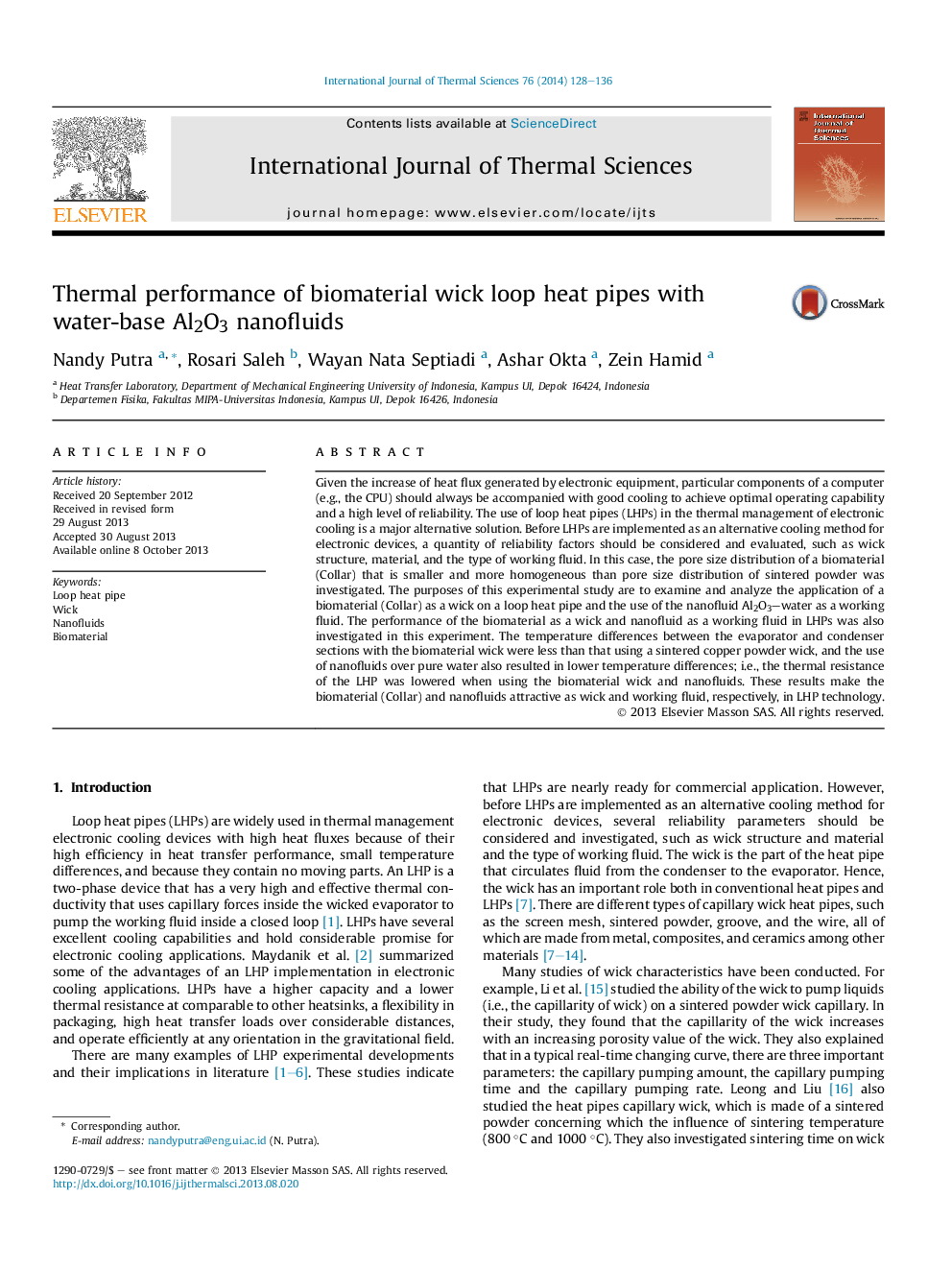| Article ID | Journal | Published Year | Pages | File Type |
|---|---|---|---|---|
| 669389 | International Journal of Thermal Sciences | 2014 | 9 Pages |
Abstract
Given the increase of heat flux generated by electronic equipment, particular components of a computer (e.g., the CPU) should always be accompanied with good cooling to achieve optimal operating capability and a high level of reliability. The use of loop heat pipes (LHPs) in the thermal management of electronic cooling is a major alternative solution. Before LHPs are implemented as an alternative cooling method for electronic devices, a quantity of reliability factors should be considered and evaluated, such as wick structure, material, and the type of working fluid. In this case, the pore size distribution of a biomaterial (Collar) that is smaller and more homogeneous than pore size distribution of sintered powder was investigated. The purposes of this experimental study are to examine and analyze the application of a biomaterial (Collar) as a wick on a loop heat pipe and the use of the nanofluid Al2O3-water as a working fluid. The performance of the biomaterial as a wick and nanofluid as a working fluid in LHPs was also investigated in this experiment. The temperature differences between the evaporator and condenser sections with the biomaterial wick were less than that using a sintered copper powder wick, and the use of nanofluids over pure water also resulted in lower temperature differences; i.e., the thermal resistance of the LHP was lowered when using the biomaterial wick and nanofluids. These results make the biomaterial (Collar) and nanofluids attractive as wick and working fluid, respectively, in LHP technology.
Related Topics
Physical Sciences and Engineering
Chemical Engineering
Fluid Flow and Transfer Processes
Authors
Nandy Putra, Rosari Saleh, Wayan Nata Septiadi, Ashar Okta, Zein Hamid,
